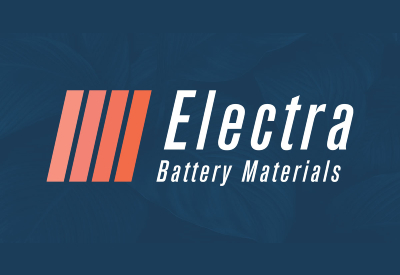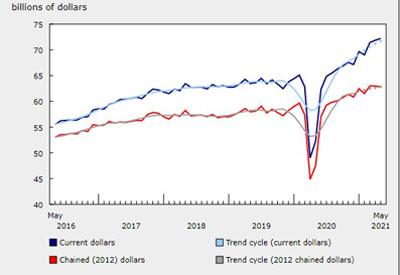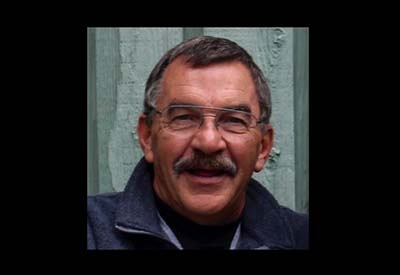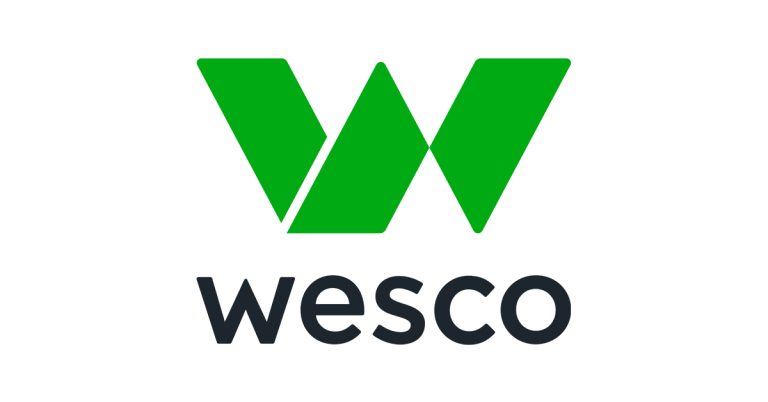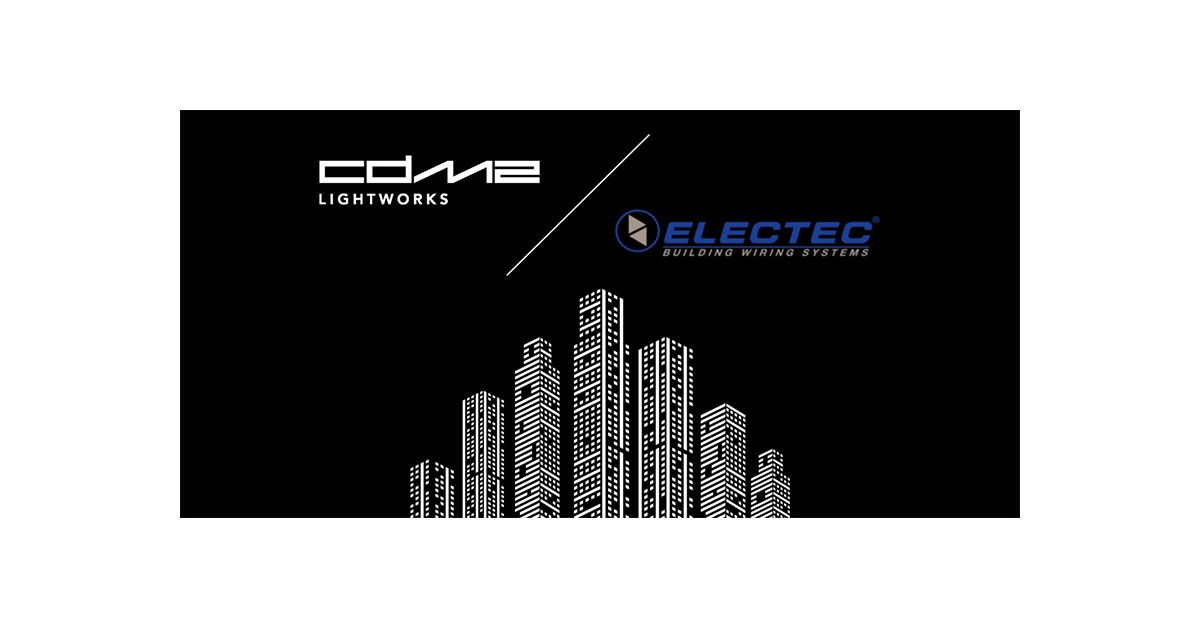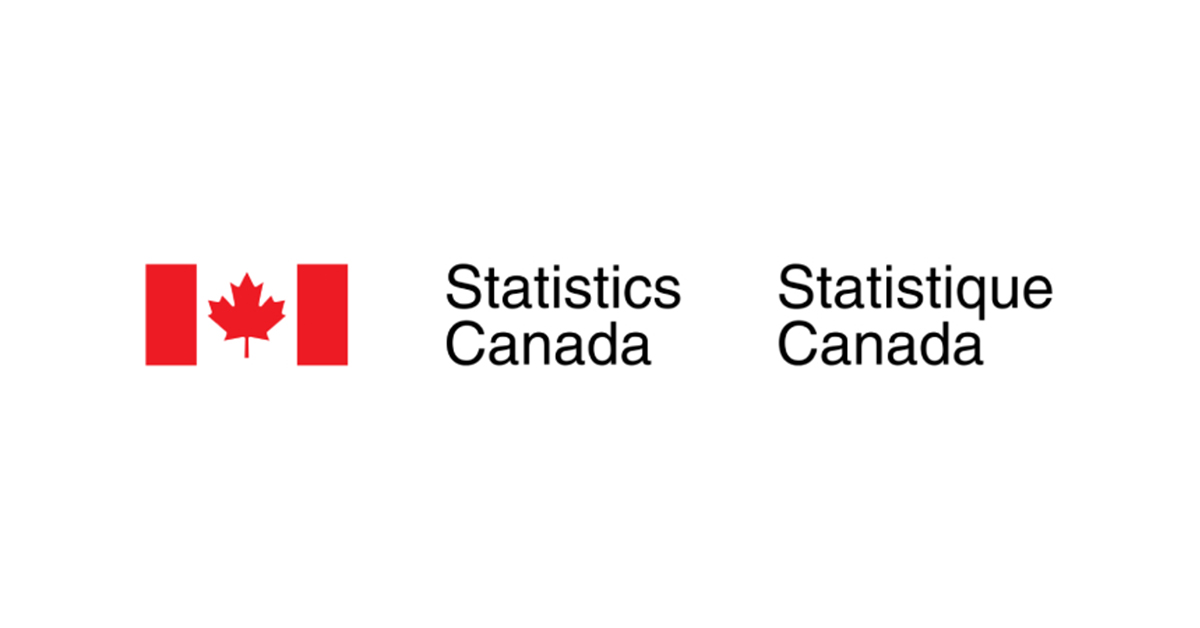Building Retrofits are Critical in the Path Toward Carbon Neutrality: A Conversation with Hugo Lafontaine of Schneider Electric
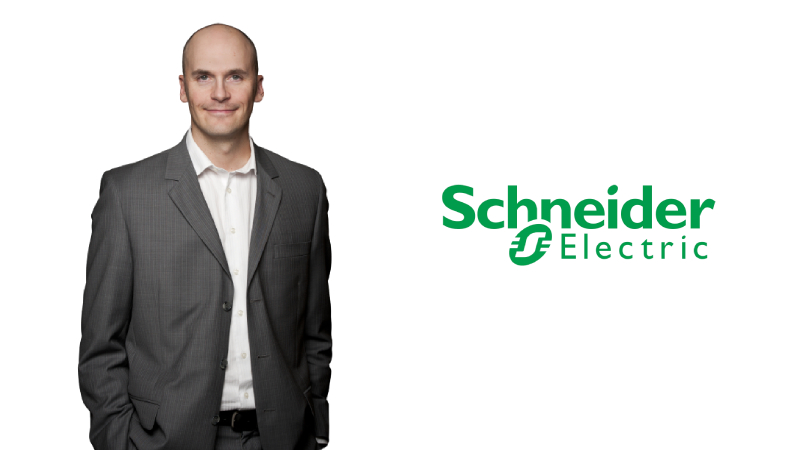
January 4, 2023
By Blake Marchand
Canada is a country, “where there’s a lot of work to be done, to be honest, when it comes to energy efficiency in our buildings,” commented Hugo Lafontaine, Vice President – Power Products and Digital Energy with Schneider Electric. “Our buildings, both private and public, are behind the times.”
The flip side is that makes for an exciting time in Canada when it comes to the opportunities to implement new technologies and solutions.
More and more companies are developing their own carbon neutrality targets as 2030 marks an increase in Canada’s carbon pricing system and that will help drive trend toward sustainable buildings.
“There’s going to be an intensity to upgrade and update our buildings. Technologies that Schneider has in terms of automation, software, analytics platforms, reporting tools, measurements and verifications, our field service team are all things that are evolving to be in line with that.”
That is why it is such an exciting time for someone like Lafontaine.
However, there is a lot of work to be done from the perspective of government regulation, codes and standards, and financial incentive. Smart buildings and smart cities have massive implications in our ability to meet carbon neutral targets and growing the adoption is a comprehensive approach that includes industry, government, and financial institutions. The solutions required are complex enough to make collaboration and interoperability a key priority for a company in Schneider’s position.
We currently have government buildings, for example, that run-on pneumatic controls, which is a technology that was being implemented 30-40 years ago.
Although, there are projects underway to upgrade and retrofit those types of buildings. Lafontaine noted that in Ottawa they are retrofitting the heat district plant, they’re building three new heat plants to distribute energy to 40-50 buildings in Ottawa. Every one of those buildings connected to that system will have to upgrade their controls.
“I think these (types of projects) are really showing that we’re starting to do the work that needs to be done. And that’s why I’m super excited for the fact that Schneider Electric has building automation technologies, we have sensors, we have an established network of meters, and power quality devices that are aligned to really help and reduce carbon neutrality targets and requirements in each building.”
It’s a sign for Lafontaine that we’re recognizing the portfolio is aging, and investment is needed.
Lafontaine noted they work with retrofits and new builds. Retrofits are key because there is a big market, and they are more efficient in terms of carbon emissions. The reason being new buildings require more carbon to build than existing buildings require to be retrofit.
This article focuses on retrofits, what smart buildings look like, how they can communicate with the grid, energy sources, as well as with one another smart buildings to create smart cities.
Approach to Retrofits
A retrofit is about allowing the building to operate while its being upgraded. Using wireless technologies, reducing the capital expenditure requirements to install and limiting the disturbance for tenants.
“The ability to move a lot of data from edge devices to servers, cloud solutions are big in future proofing a building,” Lafontaine noted. “We know there’s only going to be more requirements around data and what you do with it as we progress in the evolution of getting buildings more energy efficient and closer to carbon neutrality.”
Lafontaine said Schneider has an overarching vision around buildings and what they need to be in the future, and they approach retrofits from that perspective.
The buildings of the future, he said, will need to be energy efficient, they will need to be safe for the tenant when it comes to air quality, and they will need to be resilient, “there’s a lot of climate change happening out there, there’s a lot of power outages happening – that makes it a requirement that (buildings) can sustain a change in the environment and still be operational.”
Lastly, he said, buildings need to be efficient in terms of operations. Those are the four pillars that guide their approach to retrofitting buildings.
The focus will vary depending on the individual needs of the building, the location, the budget, and the expectations of the end user.
“Our approach is really around how we cater to those four pillars, what matters to the customer, but also what services they need to achieve. When you think about the overall carbon reduction, for me there’s always a technology play – the technologies are product oriented or solution oriented.”
“For products we’re talking about, how do I make sure we have power quality? How do I make sure we’re measuring? You can’t change what you don’t measure, so how do we make sure there’s enough measurements happening in the building? To meet the reporting requirements, to meet the verification and confirmation needs.”
Smart buildings are complex systems that require a holistic approach.
Lafontaine explained that, “there’s a whole aspect around the service. Service is where, especially on the retrofit and on the existing (building) portfolio, there’s a big play. How do you bring people to the table to look at your building and understand where you’re at and where you need to be. Provide you with insights, provide you with value.”
Schneider launched a new Sustainability division a couple years ago that focuses on providing a consultation-type approach. For example, Lafontaine discussed a project they worked with Walmart called Project Gigaton.
“We partnered with Walmart, and we committed together to find a solution to reduce and remove one gigaton of carbon from the operations of Walmart. And that’s done from building operations efficiency, where you buy your power from, how you can make sure you have a system of buildings that are going to be able to alternate from solar to wind to battery to fossil fuel base, and how to optimize all that.”
“That’s really important and that’s where you need to have the right players,” he said with respect to optimizing where power is coming from while maintaining power quality and energy efficiency, which Schneider has positioned itself to offer to customers.
Given the complexity, there is no one-solution approach. Meaning that interoperability and collaboration is crucial.
“We strongly believe that it’s not one solution that’s going to take care of it, it’s a multi-solution that’s going to bring the portfolio of buildings towards where it needs to be to reduce the carbon footprint globally and in Canada.”
Market Considerations
There are differences in the energy markets across Canada that impact the approach to energy efficient buildings.
Alberta, Ontario, and Quebec, Lafontaine said for example, offer different landscapes that require different approaches. In Quebec there is strict regulation around providing grid energy and the cost of energy is low; when you look at Alberta there’s mostly fossil fuels; in Ontario it’s a blend of nuclear, hydro, and fossil fuel during peak.
“Strategies are very different depending on where you are,” he said. Which makes flexibility important from Schneider’s perspective. “When you deal with a customer that has buildings across Canada, for example, having a solution per-territory is really important.”
Interoperability & Collaboration
Discussing the importance of collaboration, Lafontaine used the example of integrating EV technology into buildings.
Schneider is in the process of developing an EV charging solution. When it comes to retrofits as well as new buildings a challenge is adding EV charging capabilities to building without being too much for the peak requirements.
“This is where we’re starting to blend EV technology with a microgrid technology – which is basically a hub, a brain in your building that’s going to decide when to take energy from the grid, when it’s time to leverage the solar panels you have on the roof, versus having a purchasing agreement for where your energy comes from, versus using energy at night when you know the grid isn’t using fossil fuels and storing your battery up, and during peak hours in the morning and afternoon you start using your battery.”
“All that strategy is available now, that capacity, that computing power, being able to purchase batteries, having a switch gear that allows you to switch power source to power source, working with the grid.” Working with organizations like the AESO or IESO, for example, is critical for Schneider in deploying a robust strategy and meeting carbon neutrality goals.
Schneider has developed partnerships with contractors, software companies, and various service providers to complete the full solution.[BM1]
“There’s tons of potential there, but it’s going to require focus and expertise,” Lafontaine said.
As Lafontaine mentioned, there’s a lot of work to be done in Canada with respect to building efficiency, and although it requires a comprehensive approach, there is a massive opportunity to not only lower emissions but grow the economy.
A key aspect of Schneider’s approach with their sustainability consulting is using third-party technology or strategies to achieve their goals as well as the country’s goals.
“We have to be realistic that it’s for the benefit of the customer to have the right service provider but also the right blend of technologies.”
Given the complexity of the landscape one company won’t have all the solutions under one roof, which puts emphasis on collaboration and partnerships. That is the philosophy Schneider has embraced to better serve their customers as well as contribute to the progression of sustainable buildings.
“You have to be able to integrate: bring the best EV charging station, bring the best battery pack, bring the best solar technology; find the right people to implement, to install.”
Schneider is a provider that allows the “best of the best” (as Lafontaine put it) to come together, so that the solution meets the current and future needs of the client.
For Schneider, software is a big point of emphasis when it comes of energy efficiency. Collecting and analyzing data is critical to the energy transition. Software is also about integrating the technologies being utilized. They have made partnerships with software companies to develop the ‘holistic’ approach. From there they narrow things down to the hardware components, as well as the right electricians and contractors to complete the installation.
The traditional approach to buildings tends to be more segmented, but when you look at the requirements needed to develop buildings that are efficient and resilient, the key word is integration. All of the technologies being deployed and the different aspects that make up the building envelope, requires integration and strategy. They need to be able to communicate.
“Having that integrated approach is really how you achieve smart buildings,” Lafontaine said.
“Smart buildings bring connectivity, it brings efficiencies, it also brings attachment from the tenant to the operations. So, you can actually interact with the system with your phone.”
You also have smart buildings interacting with each other.
“Imagine a grid where you have 20 buildings, in it you have a data centre that’s producing way too much energy, you can leverage that heat and dump it in other buildings, and then when there’s too much cooling one place you can shift it somewhere else, you can reduce the consumption amount in the morning (when demand is high); there’s a lot of things you can do when you start interacting with other smart buildings.”
“That’s where (integration) is really important, where we need to push the envelope. We need a lot of smart buildings – we need smart infrastructure and smart cities.”
That means implementing the best technologies we have available, it means we need to have a vision when we’re thinking about how we design buildings, infrastructure, and cities. Which ultimately comes down to having a building codes and standards that facilitate the transition to smart infrastructure that can interact and optimize performance with efficiency.
“We need to have our governments and municipalities, all the players involved to really drive the push. Because if we do it purely on financials – we see how slow that’s going. So, we need to push from a legal aspect too, I believe,” explained Lafontaine.
“In the world of building technologies, the good news is more of the technologies are converging towards openness – either to open protocols or what I would call API’s, the ability to extract data from one platform to the other. Both are on the read/write approach.”
You want to be able to read data from a device as well as write, to tell it when to go on and off, for example. There’s a due diligence required among building operators/developers to engage with technologies that are open to interoperability.
Speaking about Schneider, he said, “every single thing we design today, is open platform. Every software that we buy has APIs and open mentality in it, even our hardware – all the way down to the R&D phase and the base layer of the product, the first questions is: how is this going to be open, how is data going to be transferred and received from and it, and how do we make sure we’re inline with that?”
That philosophy is embedded in the company’s vision and commitment to customers, because open architecture and interoperability are critical to sustainability, and sustainability is part of Schneider’s DNA as a company.
Which is more than just a mission statement, Schneider has been recognized multiple times for their commitments to sustainability. They provide transparency when it comes to the carbon footprint of their products and have prioritized sustainability in their supply chain and reducing the carbon footprint in what they source.
“At the end of the day it’s a whole ecosystem that needs to work together to make (carbon neutrality) happen – it starts with open communication, it starts with interoperability, and integration.”
Barriers to Adoption
“I think we need to put a lot more pressure on our building codes,” said Lafontaine on the barriers to adoption of smart buildings.
The building code is essentially the ‘bare minimum’ of what a building needs to be. Which a lot of times comes down to cost. If the code is set to a high standard, then achieving code compliance may be more expensive. However, the reality of the situation we are in with respect to climate change and the energy usage that buildings account for, there is cause for meaningful action.
“We need to have guidelines and a lot of regulation around building to the best of our abilities,” Lafontaine said. Although the capital investment may be higher with smart buildings, you save on operational costs.
“Having the ability to finance the projects, to help building owners find the right money they need to build the right building is where we need help.”
Sustainable infrastructure requires investment – however the decision-making metrics investment firms use often fail to factor in the importance of sustainability. Another aspect of the transition to a more sustainable future is changing the way banks look at investing and loaning money for green projects.
“They’re more about risk management, return on investment, and they don’t allow for the whole dimension of, how do we do the right thing for our planet?” Lafontaine explained. Although there are firms now that have prioritized sustainable investments and working with clients that prioritize sustainability, that is not the standard.
“We need to bridge that chasm between financial risk analysis and banks loaning money to companies and having the right model where we can move money to enable these projects.”
The strategies, the technologies, the service providers are there, but a gap remains in how financial institutions make funding decisions. There are government supports and funds to support green projects and help bridge the gap and make the return on investment more attractive for the financial sector, but more is needed.
The more we bridge that gap – which requires work from governments, regulatory bodies, industry, and financial sectors – the more we can move toward meaningful development towards a sustainable future.

